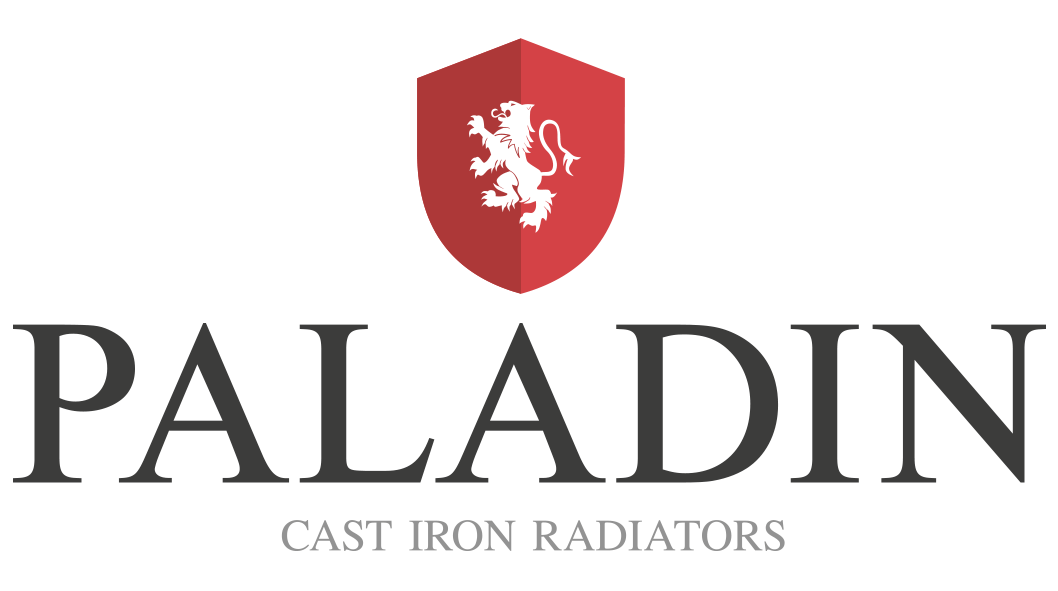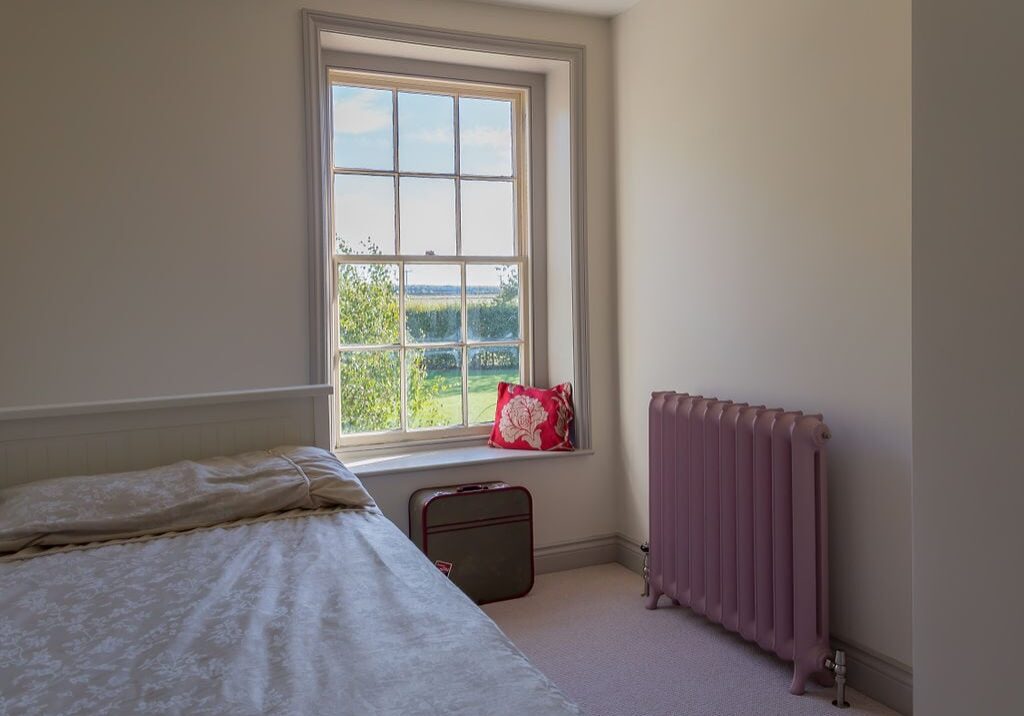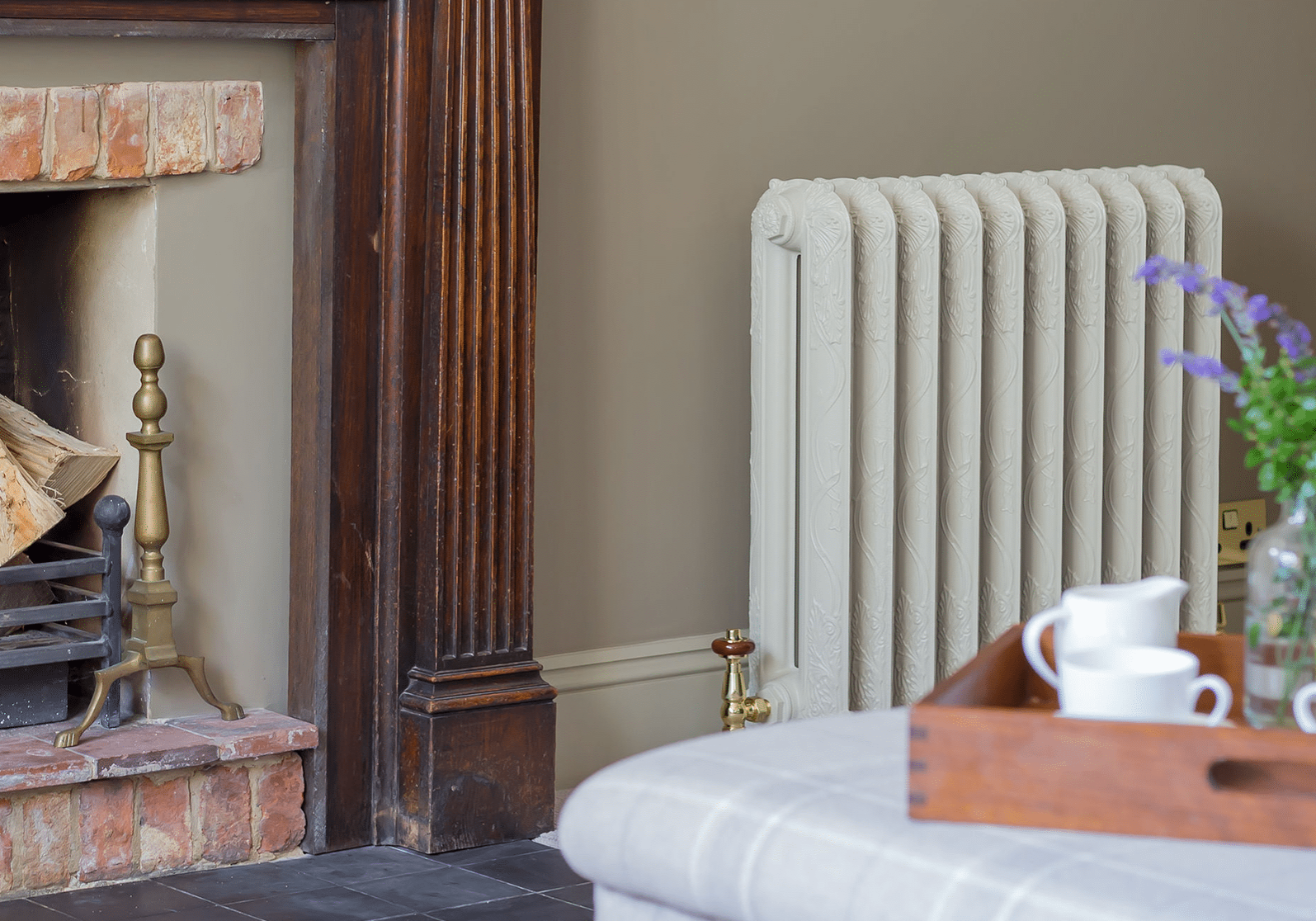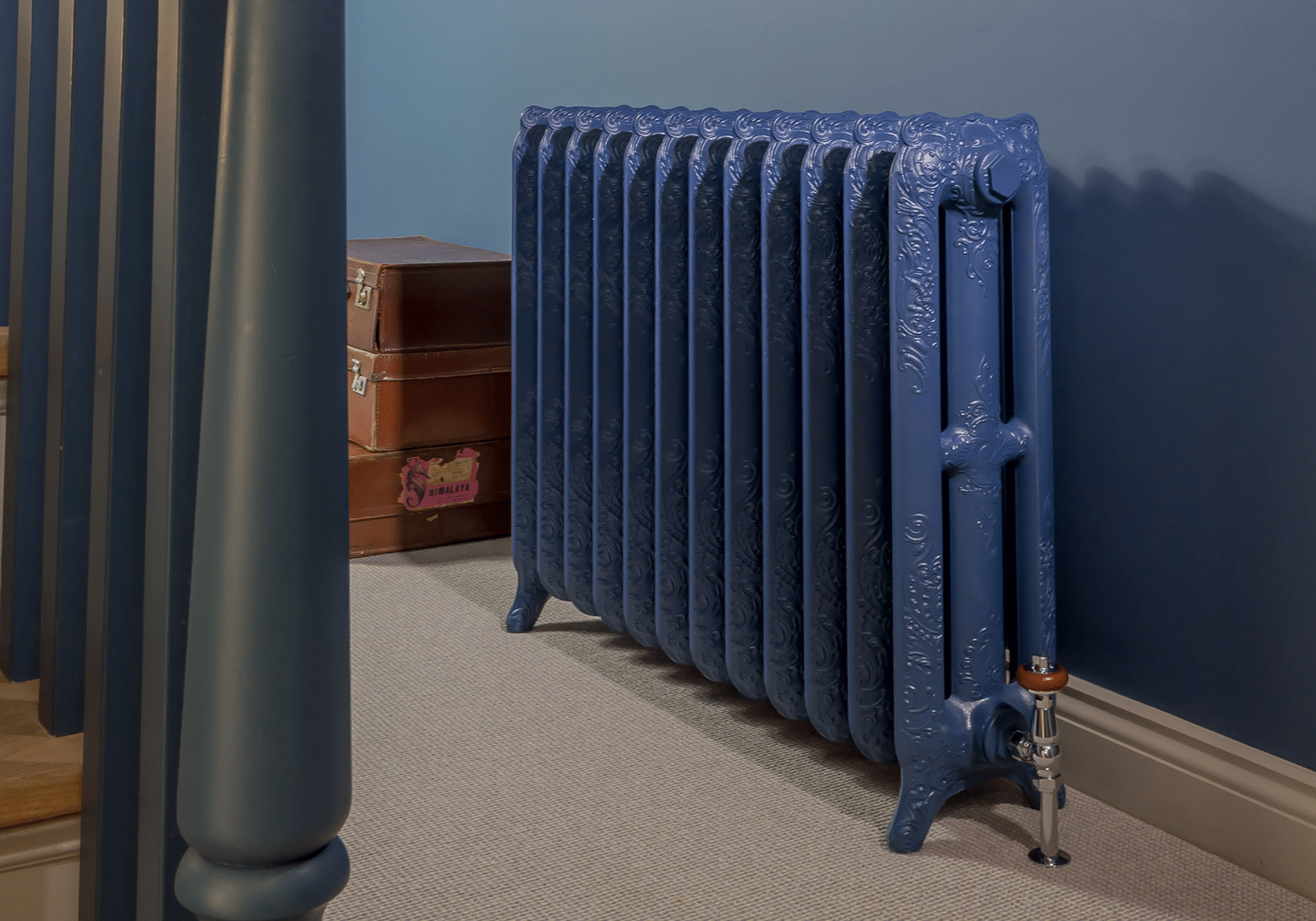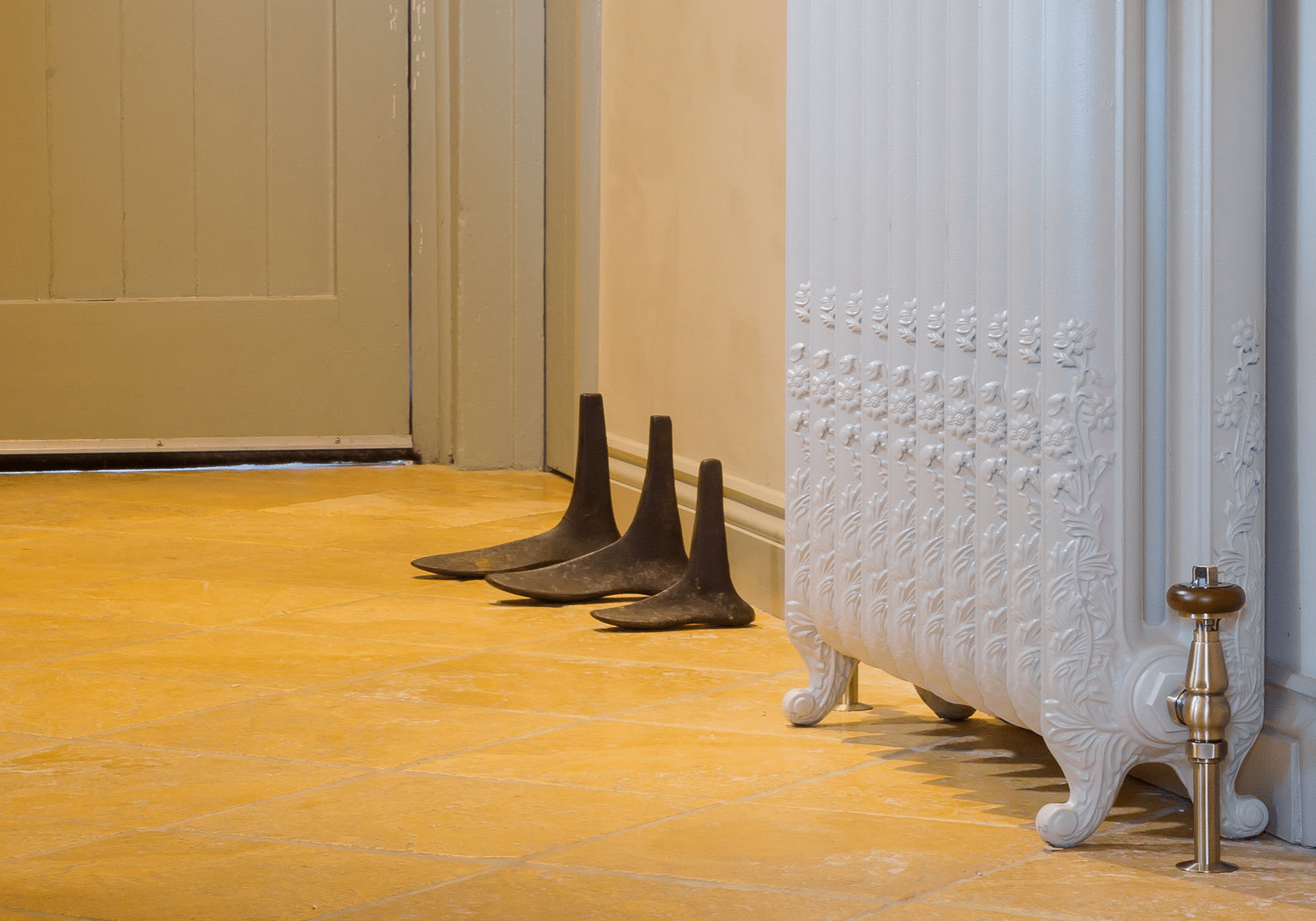How to Clean a Cast Iron Radiator: The Ultimate Guide
A cast iron radiator isn’t merely a functional object—it’s a statement of style, a nod to heritage, and a source of efficient, enveloping warmth. At Paladin Radiators, we take this further, blending tradition with innovation, charisma, quality, and craftsmanship to create stunning cast iron radiators that enhance any home, whether a Victorian terrace or a sleek modern flat. Each radiator, hand-built by our expert craftsmen in the UK and cast in our dedicated foundry, is designed to deliver aesthetic distinction and practical performance. To keep these treasures in top condition, is non-negotiable to have regular cleaning and maintenance. Dust, dirt, and rust can accumulate over time, dulling their shine and efficiency.
This ultimate guide is your roadmap to maintaining the beauty and functionality of your cast iron radiator. Whether you’ve just installed one of our Paladin Piccadilly Ribbon Pattern radiators or you’re nurturing a family heirloom, we’ll walk you through the why, the how, and the what-not-to-do, with expert tips tailored to ensure your radiator remains a centrepiece for years to come. From routine dusting to tackling rust, here’s everything you need to know.
1. Why Cleaning Your Cast Iron Radiator Matters
Cleaning a cast iron radiator goes beyond vanity—it is to optomise the performance, safeguard health, and preserve longevity. Here’s why it’s worth the effort:
- Improved Heat Output: Dust and grime settle into the crevices of a radiator’s columns, acting like an unwanted blanket that traps heat. A clean radiator—especially one of Paladin’s finely crafted designs—radiates warmth more effectively, heating your room faster and reducing energy waste. In an era of rising energy costs, this is a practical win.
- Better Air Quality: Dust isn’t just unsightly; it’s a breeding ground for allergens. When your radiator kicks into action, it can stir up particles, circulating them through your home. Anyone with allergies, asthma, or respiratory sensitivities, causing discomfort. Regular cleaning keeps the air fresher and your family healthier.
- Prolonged Lifespan: Cast iron is famously durable—our radiators are built to last generations—but neglect invites rust and corrosion. By maintaining yours, you’re protecting an investment that could serve your home for decades, a testament to the craftsmanship poured into every Paladin piece.
- Preserved Aesthetic Appeal: Many customers choose Paladin radiators for their vintage charm or bespoke finishes, from polished elegance to bold custom colours. A layer of dust or a rust spot can undermine that appeal. Keeping it clean ensures it remains a focal point, whether in a period property or a contemporary space.
At Paladin, we’ve heard from delighted customers who marvel at the “excellent painting and polishing finish” of our radiators. Cleaning is how you honour that quality. Let’s dive into the practical steps.
2. Tools and Materials Needed
Before you begin, arm yourself with the right tools. A well-prepared approach makes cleaning efficient and protects your radiator’s finish. Here’s what you’ll need:
- For Dust Removal:
- Soft microfibre cloth—gentle on surfaces, perfect for our hand-finished radiators.
- Vacuum cleaner with a brush attachment—to tackle loose dust without scratching.
- Radiator cleaning brush—a long, flexible tool designed to snake into tight spaces between columns.
- Compressed air canister (optional)—ideal for dislodging stubborn particles in intricate designs like our Piccadilly range.
- For Rust and Paint Maintenance:
- Fine-grade steel wool or sandpaper—for light rust removal without damaging the metal.
- Rust remover—a safe, effective solution for deeper corrosion.
- Touch-up paint—heat-resistant and ideally matched to your radiator’s finish. Paladin offers a full colour-matching service to keep your radiator flawless.
These tools are readily available, but quality matters. Cheap, abrasive materials can harm the meticulous craftsmanship of a Paladin radiator, so opt for the best you can find.
3. How to Clean the Exterior of a Cast Iron Radiator

Step 1: Remove Surface Dust and Debris
Frequency: Weekly
Start by turning off your heating system—safety first—and let the radiator cool completely. Hot metal and cleaning don’t mix. Grab your vacuum cleaner with its brush attachment and gently run it over the exterior, focusing on the tops, sides, and gaps between columns. Next, use a radiator cleaning brush to reach deeper into those tight spaces—its slim, flexible design is a game-changer for intricate patterns. If you spot lingering particles, a quick blast from a compressed air canister (used sparingly) can flush them out. This step keeps your radiator looking sharp and primes it for deeper cleaning.
Step 2: Wipe Down the Radiator
Frequency: Monthly
Now, dampen a microfibre cloth with warm water and a mild soap—nothing harsh, as our finishes deserve gentle care. Wipe the entire surface, paying extra attention to the top edge and rear, where dust tends to hide. A slightly firmer rub might be needed for stubborn marks, but avoid over-scrubbing. Excess water is the enemy of cast iron, so wring your cloth well—our radiators are built to last, but moisture can invite rust if left unchecked. Dry the surface with a clean, dry cloth to finish. This routine keeps your Paladin radiator gleaming, whether a classic design or a custom-painted showpiece.

4. How to Clean Inside a Cast Iron Radiator
Frequency: Every 1-2 Years
The interior of a cast iron radiator—those hidden columns—can become a haven for dust, pet hair, and small debris, all of which hamper efficiency. Start with your radiator brush or vacuum attachment, sliding it into each section to dislodge buildup. For trickier spots, improvise with a thin, flexible duster or a cloth wrapped around a stick—just be gentle to avoid scratching the interior. Paladin’s superior castings mean fewer rough edges, but thoroughness is key. Once done, vacuum again to suck up loosened debris. This deeper clean ensures your radiator performs at its peak, delivering the warmth you expect from our hand-built designs.

5. How to Remove Rust from a Cast Iron Radiator
Frequency: As Needed
Rust is the arch-nemesis of cast iron, often triggered by lingering moisture or chipped paint. Thankfully, small spots are manageable at home. Lightly sanding the affected area with fine-grade steel wool or sandpaper—go easy to preserve the surrounding finish. For stubborn rust, apply a rust remover, following the product’s instructions carefully. Once the area is clean and dry, it’s time to repaint. Use a heat-resistant radiator paint, and if you want a perfect match, Paladin’s colour-matching service can replicate your original finish, from muted heritage tones to vibrant bespoke hues. This stops rust in its tracks but restores your radiator’s flawless look. For larger rust issues, consult a professional—our team is always happy to advise.

6. Preventing Rust and Long-Term Maintenance
Prevention is better than cure, especially with a Paladin radiator built to endure. Here’s how to keep it in top shape:
- Avoid Excessive Moisture: Wipe spills or condensation immediately—cast iron loves a dry environment.
- Check for Leaks: Even minor drips can lead to rust over time. If you spot one, address it promptly—our radiators are robust, but vigilance pays off.
- Repaint as Needed: If paint peels or chips, mend with heat-resistant paint from our bespoke range. A fresh coat not only looks good but shields against corrosion.
Regular maintenance reflects the care taken in crafting each radiator at our UK foundry. Customers often tell us, “I can’t wait to get them installed!”—let’s ensure they stay just as impressive long after.

7. Common Mistakes to Avoid
Even with the best intentions, missteps can harm your radiator. Steer clear of these:
- Using Abrasive Chemicals: Bleach or acidic cleaners can strip paint and damage metal—stick to mild soap.
- Scrubbing Too Hard: Overzealous scrubbing risks removing protective coatings—gentle pressure is enough.
- Overwetting the Radiator: Too much water accelerates rust—less is more.
- Ignoring Small Rust Spots: What starts small can spread, so tackle rust early.
Cleaning your cast iron radiator is a simple yet essential, ensuring it remains a source of warmth and beauty for years. With weekly dusting, monthly wipes, and occasional deep cleans, you’ll maintain the efficiency and elegance that Paladin Radiators is known for. Our hand-built radiators, delivered from just seven days and finished to your exact specifications, are investments worth protecting. Explore our range at Paladin Radiators today—whether you need a new radiator or expert advice, we’re here to help keep your home warm and wonderful.
“I want to say thanks and how fantastic the radiators look along with the cast quality and the excellent painting and polishing finish. I now can’t wait to get them installed! Many thanks again for all your help and assistance.”
“Thank you for all your help, we will definitely recommend Paladin to anyone we know who is looking for cast iron radiators and will get in touch when we’re needing radiators for our ground floor.”
